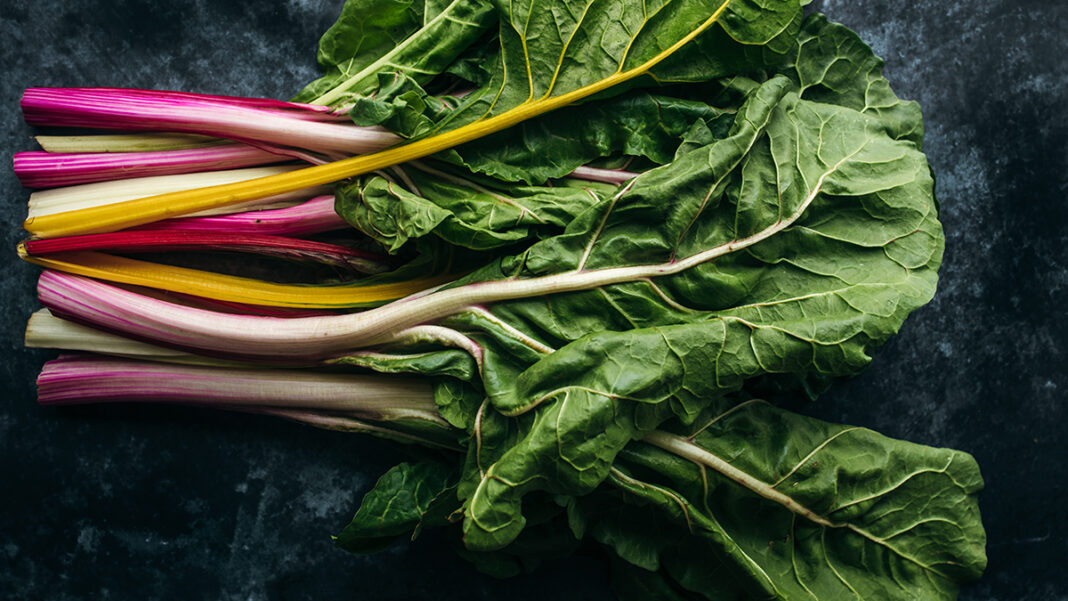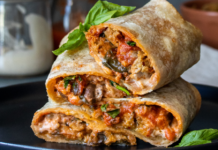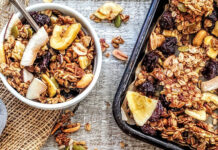The more I’ve researched over the years, the more I’ve come to realize that healthy foods are not necessarily interchangeable. Some foods and food groups have special nutrients not found in abundance elsewhere. For example, sulforaphane, the amazing liver-enzyme detox-boosting compound, is derived nearly exclusively from cruciferous vegetables. You could eat tons of other kinds of greens and vegetables on a given day, and get no appreciable sulforaphane if you didn’t eat something cruciferous.
It’s the same with flax seeds and the anticancer lignan compounds. Flax may average a hundred times more lignans than other foods. And mushrooms aren’t even plants at all; they belong to an entirely different biological classification, and may contain nutrients (like ergothioneine) not made anywhere in the plant kingdom.
It seems like every time I come home from the medical library buzzing with some exciting new data, my family rolls their eyes, sighs, and asks, “What can’t we eat now?” Or they’ll say, “Wait a second. Why does everything seem to have parsley in it all of a sudden, or something?” They’re very tolerant.
As the list of foods I tried to fit into my daily diet grew, I made a checklist and had it up on a little dry-erase board on the fridge, and we’d make a game out of ticking off the boxes. This evolved into my Daily Dozen: the checklist of all the things I try to fit into my daily routine.
This may all sound like a lot of boxes to check, but it’s easy to knock off a bunch at a time. One simple peanut butter-banana sandwich, and you just checked off four boxes. Or, imagine sitting down to a big salad: two cups of spinach, a handful of arugula, a handful of walnuts, a half-cup of chickpeas, a half-cup of red bell pepper, and a small tomato. You just knocked out seven boxes in one dish. Sprinkle on your flax, add a handful of goji berries, and enjoy it with a glass of water and fruit for dessert, and you just wiped out nearly half your daily check boxes in a single meal! And then, if you just eat it on your treadmill—just kidding!
Whenever I was sitting down to a meal, I would ask myself: Could I add greens to this? Could I add beans to this? (I always have an open can of beans in the fridge.) Can I sprinkle on some flax or pumpkin seeds, or maybe some dried fruit? The checklist just got me into the habit of thinking, How can I make this meal even healthier?
I also found the checklist helped with grocery shopping. Although I always keep bags of frozen berries and greens in the freezer, if I’m at the store and want to buy fresh produce for the week, it helps me figure out how much kale or blueberries I need.
The checklist also helps me picture what a meal might look like. Looking over the checklist, you’ll see that there are three servings each of beans, fruits, and whole grains, and about twice as many vegetables in total than any other component. So, glancing at my plate, I can imagine one quarter of it filled with grains, one quarter with legumes, and a half a plate filled with vegetables, along with maybe a side salad and fruit for dessert. I happen to like one-bowl meals where everything’s mixed together, but the checklist still helps me to visualize. Instead of a big bowl of spaghetti with some veggies and lentils on top, I think of a big bowl of vegetables with some pasta and lentils mixed in. Instead of a big plate of quinoa with some stir-fried vegetables on top, I picture a meal that’s mostly vegetables—and oh, look! There’s some quinoa and beans in there too.
But, there’s no need to be obsessive about the Daily Dozen. You know, on hectic travel days, when I’ve burned through my snacks and get stuck in some airport food court, sometimes I’m lucky if I even hit a quarter of my goals. If you eat poorly one day, just try to eat better the next.
My hope is that the checklist will just serve as a helpful reminder to try to eat a variety of some of the healthiest foods every day.
1 | BEANS
3 SERVINGS
By beans, I mean legumes, which also includes split peas, chickpeas, and lentils. You know, while eating a bowl of pea soup or dipping carrots into hummus may not seem like eating beans, it certainly counts. We should try to get three servings a day. A serving is defined as a quarter-cup of hummus or bean dip, a half-cup of cooked beans, split peas, lentils, tofu, or tempeh, or a full cup of fresh peas or sprouted lentils. Though peanuts are technically legumes, nutritionally, I’ve grouped them in the Nuts category, just as I would shunt green beans, snap peas, and string beans into the Other Vegetables category.
2 | CRUCIFEROUS VEGETABLES
1 SERVING
Common cruciferous vegetables include broccoli, cabbage, collards, and kale. I recommend at least one serving a day (typically a half-cup) and at least two additional servings of greens a day—cruciferous or otherwise.
3 | WHOLE GRAINS
3 SERVINGS
A serving of whole grains can be considered a half-cup of hot cereal, such as oatmeal, cooked whole grains, or so-called
“pseudograins,” like amaranth, buckwheat, and quinoa, or a half-cup of cooked pasta or corn kernels, a cup of ready-to-eat (cold) cereal, one tortilla or slice of bread, half
a bagel or English muffin, or three cups
of air-popped popcorn.
4 | BERRIES
1 SERVING
A serving of berries is a half-cup fresh or frozen, or a quarter-cup of dried. While, biologically speaking, avocados, bananas, and even watermelons are technically berries, I’m using the colloquial term for any small edible fruit—which is why I include kumquats and grapes and raisins, as well as fruits that are typically thought of as berries, but actually technically aren’t, such as blackberries, cherries, mulberries, raspberries, and strawberries.
5 | GREENS
2 SERVINGS
Serving sizes for other greens and vegetables are a cup for raw leafy vegetables, a half-cup for other raw or cooked non-leafy vegetables, and a quarter-cup for dried mushrooms.
6 | FLAX SEEDS
1 SERVING
Everyone should try to incorporate one tablespoon of ground flax seeds into their daily diet, in addition to a serving of nuts or other seeds.
7 | NUTS
1 SERVING
A quarter-cup of nuts is considered a serving, or two tablespoons of nut or seed butters, including peanut butter. (Chestnuts and coconuts, though, don’t nutritionally count as nuts.)
8 | OTHER FRUIT
3 SERVINGS
For other fruits, a serving is a medium-sized fruit, a cup of cut-up fruit, or a quarter-cup of dried fruit. Again, I’m using the colloquial, rather than the botanical, definition. So, I place tomatoes in the Other Vegetables group.
9 | OTHER VEGETABLES
2 SERVINGS
10 | SPICES
1 SERVING
I also recommend one-quarter teaspoon a day of the spice turmeric, along with any other
(salt-free) herbs and spices you may enjoy.
11 | BEVERAGES
5 SERVINGS
The serving size in the beverage category is one glass (12 ounces), and the recommended five glasses a day is in addition to the water you get naturally from the foods in your diet. I explain my rationale in my video How Many Glasses of Water Should We Drink a Day?
12 | EXERCISE
1 SERVING
Finally, I advise one daily “serving” of exercise, which can be split up over the day.
I recommend ninety minutes of moderate-
intensity activity each day, such as brisk
(four miles per hour) walking, or forty minutes of vigorous activity (such as jogging or active sports) each day.
You May Also Like
Food and Nutrition
This article is a summary of Dr. Greger’s video presentation at nutritionfacts.org.

Read This Story in Our 2022 Fall Fitness & Food Digital Edition
Featuring Brendan Brazier, athlete and pioneer in the plant-based sports nutrition industry. Trail Running 101 – plus this year’s Trail Running Shoe Review. Travel around the world to the top vegan-friendly destinations, recipes and much more!














